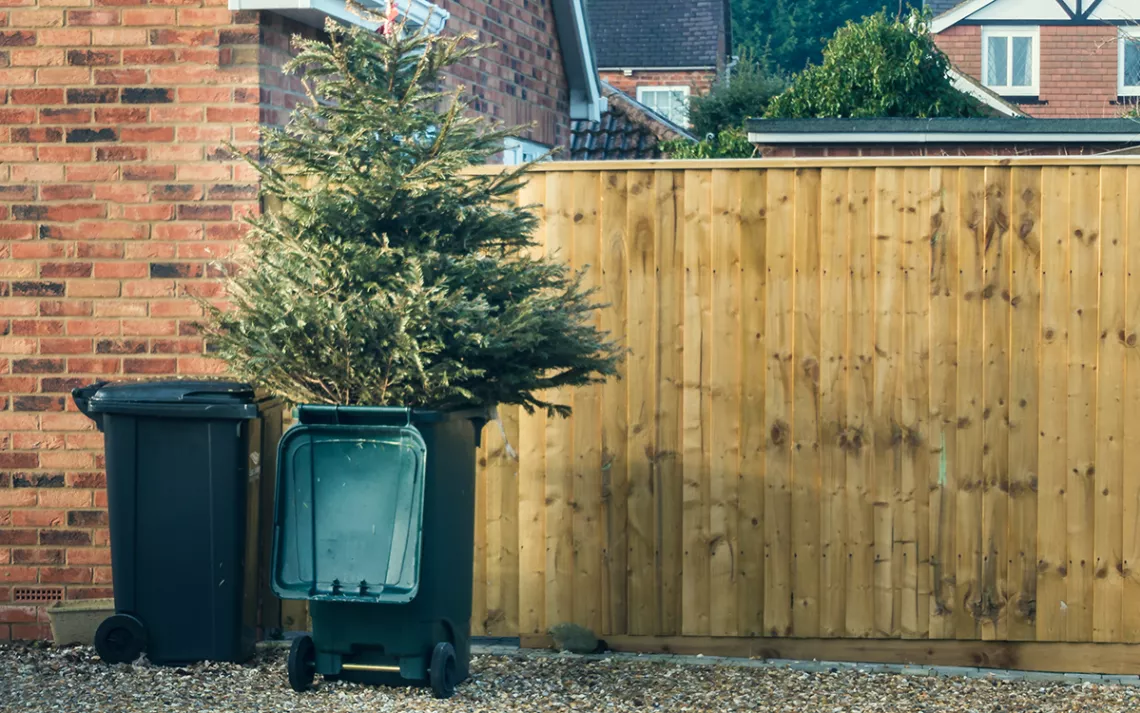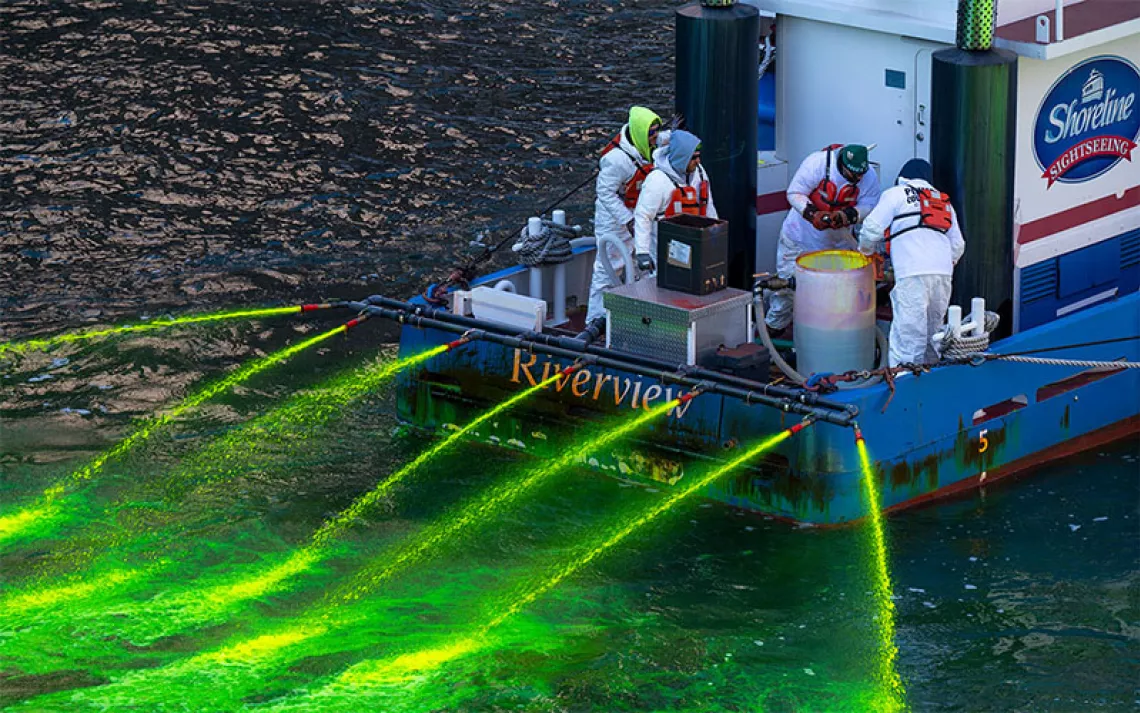How to Keep Your Christmas Tree out of the Landfill
Upcycle it into an ecofriendly ghost of Christmas past
When I was growing up, the post-Christmas routine was the same every year: Clear out the boxes, stack the gift bags and tissue paper in the garage for reuse, and bring the trash to the curb. We'd carefully repack the ornaments and the embroidered stockings my mom made when we were babies, gather up the string lights and garland, and stash it all up in the attic until the following year.
As New Year's approached, the curbs of our suburban New Orleans neighborhood filled with discarded live Christmas trees, their needles turning brown and brittle. I'd scour our tree for every last hook, bit of tinsel, and paper clip hidden among the branches, knowing it was bound for a second life as fill to help combat coastal erosion on the Louisiana coast.
Each year, an estimated 25 million to 30 million live Christmas trees are purchased in the United States. Americans chuck millions of trees into landfills, where they take up space and biodegrade slowly, due to low oxygen levels. Many others end up incinerated. Here’s a list of practical alternatives, from habitat restoration to mulching, to goat feeding and beyond.
Fighting Coastal Erosion
Since the late 1980s and early '90s, several south Louisiana parishes have reused live Christmas trees to combat coastal erosion. The exact details vary a bit by region, but trees are typically collected curbside after the new year and brought to the coastal marshes in partnerships with various nonprofits and volunteer groups. Individual parish programs collect several thousand trees, which are then stuffed into pens that dampen erosion-causing waves. These heroic trees also fill in the network of defunct canals that oil and gas companies mowed through the marshes. Louisiana’s wetlands provide critical habitat and protection from storm surges, which can cause catastrophic flooding in low-lying communities.
Rebuilding Sand Dunes
Several states, including Texas, New Jersey, and Michigan, have collected trees to shore up sand dunes, rebuilding them after damage from strong winds and foot traffic. The trees are strategically placed, or partially buried, in low areas to help trap sand and provide cover for birds. As the trees decompose, they add organic material to the soil. The tradition is particularly robust in North Carolina, where several communities collect trees for dune-rebuilding programs. One ongoing program, at Fort Macon State Park, receives around 1,500 trees a year.
Restoring Habitat
Fallen trees make great habitats for a variety of animals, from birds to rodents to fish—and Christmas trees can substitute for naturally fallen trees. In Oregon, the Tualatin Valley Chapter of Trout Unlimited collects trees and places them in wetlands to provide a safe haven for juvenile salmon and other animals through their Christmas for Coho project. Similar programs exist in California, Kentucky, and Indiana, through which trees are placed in waterways or on public lands to create shelter for wildlife.
Feeding Goats
Petting zoos, farms, and goat-grazing programs occasionally accept Christmas trees to feed their herds. The goats benefit from the trees’ vitamins and minerals, and they’re thought to have a natural deworming effect. At Pine Island Community Farm in Vermont, the annual Christmas-tree recycling and goat feeding after New Year's is a full-fledged event, complete with holiday treats. Other programs have popped up in San Francisco and Michigan.
Mulching
Mulching is one of the most popular tree-recycling programs—it’s a practice adopted through programs in Los Angeles, Chicago, New York, and Atlanta. Some cities have a curbside pickup system, while others encourage drop-offs. The trees are sent through a wood chipper and either returned to the owner for use at home or sent to local parks and playgrounds. New York City’s program, MulchFest, chips just shy of 30,000 trees a year. Some local Home Depot stores also offer Christmas-tree-mulching services between December 26 and mid-January; to find out more, call your local store.
Burning for Energy
Some municipalities collect Christmas trees for use in biomass power plants. The trees are burned to heat water, which generates steam to drive turbines and create electricity. Residents of Chittenden County, Vermont, can drop off Christmas trees—along with other clean waste wood—which is then taken to a generating station. Similar programs operate in Oregon, Florida, and California.
How to find your local options
There’s a lot of regional variation in Christmas-tree-recycling programs, so you’ll want to research timing and instructions specific to your area. A simple internet search can usually yield the details you need. You can also find more information through Earth911’s recycling database tool. Or, call your local waste collection company to see if it offers curbside pickup for recycling.
We wish good tidings to all trees embarking on their second lives!
 The Magazine of The Sierra Club
The Magazine of The Sierra Club




